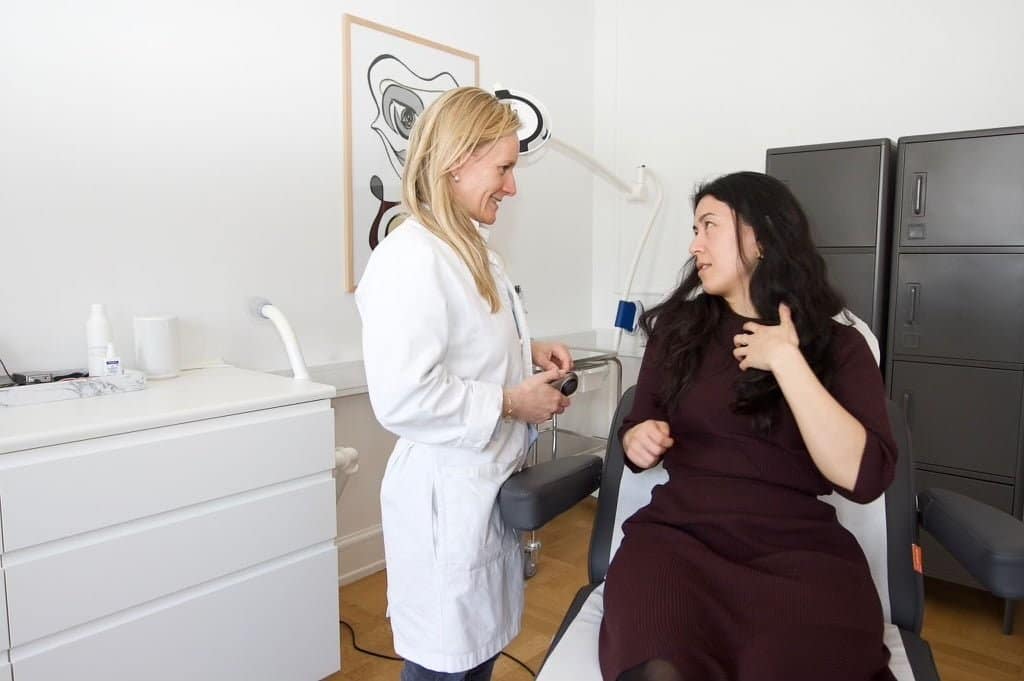This is good to know about Skin Cancer:
There is a distinction between the dangerous- Melanoma, Malignant melanoma and the much less dangerous ‘common’ , Non-melanoma skin cancer. The cancer occurs when skin cells begin to grow abnormally and uncontrollably, often as a result of damage from ultraviolet (UV) radiation from the sun or artificial sources like tanning beds. There are several types of skin cancer, the most common of which are basal cell carcinoma, squamous cell carcinoma and melanoma.
Different types of skin cancer
Skin cancer ranks as one of the most common cancers globally. The World Health Organization (WHO) reports that over 1 million cases of non-melanoma skin cancer are diagnosed annually internationally, with a significant increase in melanoma cases, with approximately 132,000 new cases recorded each year. Specifically in Denmark, data from the Danish Cancer Society shows that the number of skin cancer cases has been increasing over the past decades, making it the most prevalent cancer in the country. This trend highlights a critical need for increased public awareness and stronger prevention strategies, which is why in this article we will go through the different types of skin cancer, what you should be aware of, what you can do to prevent skin cancer and, not least, what treatment options you have if you have already been diagnosed with skin cancerBasal cell carcinoma
Basal cell carcinoma is the most common form of skin cancer, accounting for approximately 80% of all skin cancers. It most commonly occurs in sun-exposed areas, such as the face and neck, where prolonged exposure to ultraviolet light from the sun stimulates abnormal cell growth.
Basal cell carcinoma is characterized by its slow growth and low risk of spreading to other parts of the body.
Symptoms of basal cell carcinoma include pearly, growing nodules or chronic wounds that do not heal. In some cases, the lesions may bleed or crust, which can cause localized pain and discomfort.
Studies indicate that early intervention and treatment of basal cell carcinoma can reduce the risk of significant complications and functional aesthetic concerns.
This cancer responds well to treatments such as surgical removal, cryotherapy, and radiation therapy, with the latter often used in cases where surgery is not possible. Research suggests that with appropriate treatment, the survival rate is almost 100%.
Squamous cell carcinoma
Squamous cell cancer accounts for around 20% of skin cancers and develops in the epidermis, the outer layer of the skin. Unlike basal cell carcinoma, squamous cell carcinoma has a greater propensity to spread to deeper layers of skin and other parts of the body, including lymph nodes and internal organs.
Typical symptoms include hard, scaly patches that can develop into open sores. In many cases, these lesions can be painful and may bleed slightly when touched.
According to the American Cancer Society, early and effective treatment, which may include surgical removal, radiation therapy, or chemotherapy, can significantly reduce the risk of metastasis.
Furthermore, regular skin examinations and monitoring of skin changes are critical to improving the prognosis of people with squamous cell cancer, as early detection of potentially malignant changes can lead to prompt and targeted intervention.
|
Type |
Symptoms |
Risk of spreading |
|
Basal cell carcinoma |
Smooth, pearly nodules; wounds that do not heal |
Low |
|
Squamous cell cancer |
Scaly, rough patches; open sores |
Moderate to high
|
Melanoma
Melanoma is responsible for the majority of skin cancer deaths, although it only accounts for 1% of skin cancer cases, due to its aggressive nature and tendency to quickly spread to other organs.
Early signs of melanoma can include changes in existing moles, such as variations in color, size or shape.
A recent report from Cancer Research UK suggests that the relative five-year survival rate for melanoma patients diagnosed early is over 90%, illustrating the potential for life-saving results through early detection and treatment.
Skin cancer prevention and early detection
Effective prevention and early detection are crucial in the fight against skin cancer. Here are the key strategies that can be used to reduce risk and improve treatment prospects:
1. Sun protection
Protection from the sun is essential to prevent skin cancer. It is recommended to apply sunscreen with a high SPF (at least 30), wear protective clothing, and avoid the sun’s rays when they are strongest, typically between 10:00 and 15:00. A wide range of studies have shown that proper sunscreen application can significantly reduce the risk of melanoma.
2. Self-examination
Regular skin self-examinations can help with early detection of skin cancer. It is important to examine the skin for new moles or changes in existing moles using the ABCDE rule (Asymmetry, Border irregularities, Color/color variation, Diameter over 6 mm, Evolving/changes). The Danish Cancer Society has a detailed guide to self-examination which can be found on their website.
3. professional screening
Annual or biannual skin examinations by a Specialist are recommended especially for high-risk individuals. Early detection of skin cancer through professional screenings can lead to more effective treatments and better prognoses.
Treatment options for skin cancer
Depending on the type of skin cancer you develop, there may be several treatment options. At Dr. Inanna Weiss’s clinic, we offer the highest quality skin cancer treatment options that aim not only to remove the cancer cells, but also to maintain the patient’s quality of life and aesthetic appearance.
Here are some of the most commonly used and most effective methods to treat skin cancer:
Mohs/Margin controlled surgery: This technique is highly effective for treating skin cancers that are difficult to define with the naked eye and have a high risk of recurrence if not completely removed – like BCC Basal Cell Carcinoma. In Mohs/Margin controlled surgery, the removed tissue is examined layer by layer to ensure that all cancer cells have been removed while sparing as much healthy tissue as possible
Photodynamic therapy (PDT): PDT is a treatment that uses special light along with a light-sensitive medicine to destroy cancer cells. This method is particularly useful for lesions such as solar lesions/precancerous skin cancers, actinic keratoses and very superficial skin cancers where the skin is very thin.
Immunotherapy: This is a relatively new treatment that strengthens the immune system’s ability to fight cancer cells. Immunotherapy is particularly promising in the treatment of advanced melanoma. (Treatment is performed in a hospital setting)





